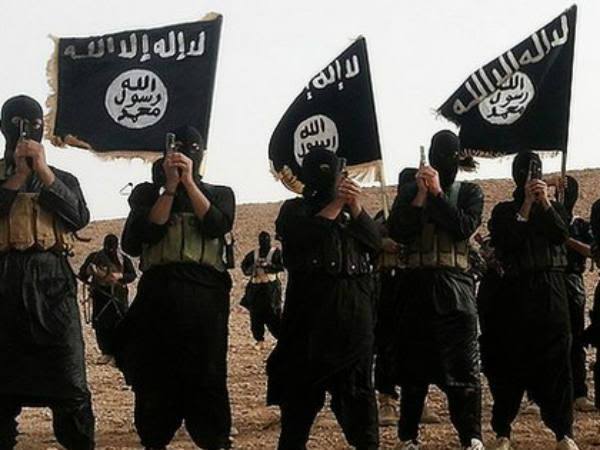Arrest of Islamic State terrorist in Russia underscores threat to Central Asia, India
India has been working with Central Asian countries in counter-terrorism both within the framework of the Shanghai Cooperation Organisation, as well as on a bilateral basis

By Aditi Bhaduri
The arrest, on August 22, by Russian authorities of Uzbek national Mashrabkon Azamov, belonging to the terrorist organisation Islamic State (IS), who was set to travel to India to attack high profile officials once again underscores the threat IS poses to the region, and how vulnerable to it Central Asia in particular is. Azamov had been radicalised in Turkiye, and New Dehi is trying to get access to him.
In June, a US district court sentenced Uzbek national Dilkhayot Kasimov to 15 years in prison for providing material support to IS. On January 26, Uzbek authorities arrested 30 people belonging to the banned Katibat al-Tawhid wal-Jihad, a jihadi group that emerged in Syria in 2013, and which attracted many recruits from Central Asia.
An earlier research conducted by the USAID found that Uzbeks are most likely to be radicalised while working as migrants abroad, where they become easy targets of recruitment. This is because in Uzbekistan authorities keep strict control and monitor any suspicious activity.
But Uzbekistan is not the only country in the region vulnerable to terrorist groups. In the aftermath of the Afghan jihad in the 1980s, and the breakup of the Soviet Union in the 1990s, radicalisation spilt over into the frontline Central Asian states. Jihadist movements such as the Islamic Movement of Uzbekistan, the Islamic Jihad of Uzbekistan, and Islamic Renaissance Party, and the Jund al-Khilafah fought long-drawn battles with states in the region. Along with these, non-violent movements such as the Hizb-ut-Tahrir, which seeks to establish an Islamic caliphate, remain active.
The Islamic State of Iraq and the Levant (ISIL) lured thousands of men, sometimes with families from these countries, as also from Russia’s Muslim provinces. According to Kremlin estimates in 2015, 5,000 to 7,000 recruits from Central Asia and Russia were fighting alongside ISIL. In fact, former police commander of Tajikistan Colonel Gulmurod Khalimov became IS’ ‘Minister of War’ in 2016. Russian-speaking recruits formed the third-largest group of ISIS fighters.
What made ISIS so attractive to Central Asians?
The region has historically been a centre of Islamic learning, and culture. For instance, the revered Sahih al-Bukhari, considered the foremost authority on the Hadiths (the deeds and acts of Islam’s Prophet Mohammed) hailed from Bukhara, part of present day Uzbekistan. With the region’s incorporation into the Soviet Union, this legacy was suppressed. Post-1991, the region rediscovered its historical legacy, and for many people religion offered an alternative to the chaos that ensued and the secular model the political elites continued to patronise.
Furthermore, the success of IS in recruiting not just men but also women and families is well-documented. IS offered the believer not just jihad, but also a home, and an Islamic system to live under.
With the fall of IS, and the Iraqi and Syrian governments reclaiming territory under the former’s control, many of the men were killed. Some were repatriated back to their home countries, where they stood trial, and have been sentenced prison terms.
However, with the relocation of IS to Afghanistan, the spectre of religious radicalism and potential civil strife and unrest continues to haunt these Muslim-majority, but staunchly secular, former Soviet republics. A major reason why the governments of almost all the Central Asian states (with the exception of Tajikistan) have made peace with the Taliban is because they view it as a lesser evil than the Islamic State—Khorasan Province (IS-KP), and pin their hopes on the former banishing the latter. However, the recent attacks by IS-KP inside prove otherwise. Moreover, within a few months of the Taliban takeover of Afghanistan in August 2021, Kazakhstan experienced unprecedented violence on its territory, which it blames on religious radicals from beyond its borders.
In February, the Canada-based think-tank International Forum for Rights and Security warned of a greater threat of IS expansion into Central Asia “taking advantage of their relevance as raw material supplier” with the potential to threaten Russia, and China.
India has been working with the countries of the region in counter-terrorism both within the framework of the Shanghai Cooperation Organisation (SCO) as the series of meetings in Tashkent reflect, as well as on a bilateral basis. New ground was broken with the first meeting of the national security advisers of India, Kazakhstan, Kyrgyzstan, Tajikistan, Turkmenistan, Uzbekistan, Iran, and Russia on Afghanistan last year. The first-ever India-Central Asia summit this year also prioritised co-ordinating efforts for fighting terrorism. All these efforts will have to be stepped up.